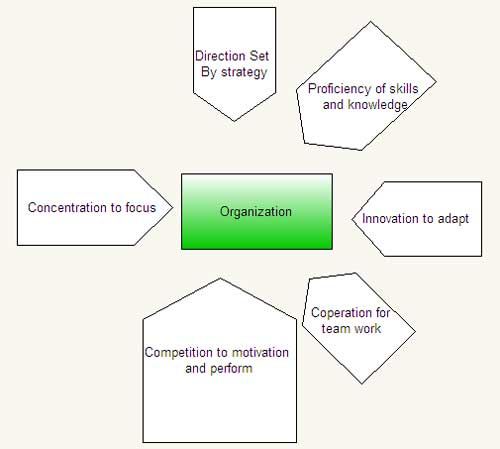Organizations and management are concepts that are very important for the understanding of MIS. Organization is the crucible in which MIS operates and management is the reason for its existence. Any understanding of MIS is incomplete without a discussion on organization and management. Organization and its structure play an important role in MIS as different levels of employees have different levels of authority.
Organization is not a monolithic entity and is structured in a formal manner. This structure is called the organization structure and management follows the organization structure. The decision-making capability is different at different levels. Information and information systems can deliver valuable information only if the theory of information systems and information management is coupled with the organization and management theory. The roles played by different levels of management also need to be understood to provide an information systems based solutions1. The major tasks of management are planning, controlling, organizing, staffing and leading.
These activities of management are carried out at different levels. Typically, management is divided into three distinct levels. These levels are-strategic level or top management that looks after the strategic interests of the organization, tactical level that looks after the smooth functioning of the organization at the tactical level and the operational level that looks at the operational issues. These levels of management have different degrees of authority and responsibility. It is important to understand the functions of each level so that a proper MIS design could be done to supply each level of management² with the right kind of information.
We’ll be covering the following topics in this tutorial:
What Is An Organization?
We are prone to use the term organization rather loosely. In the context of information, management organization means an entity (not necessarily only business entity) with a team of people working towards a common goal or objective. Resources are obviously used to attain the objective. A business organization is a special type of organization where the goal or objective of the organization is the attainment of a business outcome like increased profits, increased shareholder value, increased market share, etc. Moreover, business organizations have a way of attaining these objectives and are arranged in a distinct structure segregated into levels of hierarchy. Decision-makers at each level of hierarchy are called managers and the common way of working and management of a business organization is referred to as business management.
Organization Forms
Organizations have been conceptualized as having different forms3 like that of a machine, an organism, a coercive system and culture. Morgan (1986) has been the pioneer in identifying organizations using metaphors such as machines, brains, organisms, political systems, cultures, psychic prisons, coercive instruments of subjugation and as change and transformation. Each metaphor gives a different form and view to the organization. This is a simplistic way of viewing a complex system of an organization.
Forces at Work
Several forces are always at play within an organization. The goal of the management is to align all the forces to work together for the fulfillment of the broad objective of the organization. (Minztberg 1991) suggested that organizations are subjected to the forces of:
- Direction is the strategic pathway set by management.
- Innovation is the force to adapt to changes in the environment and come up with new products and services.
- Proficiency is the visible skill base and knowledge of the people who make the organization.
- Concentration is a force that is to be used to focus the energies of the people of the organization on a particular aspect, like developing core competencies and markets.
- Cooperation is the team work with which the objectives are achieved in the organization
- Competition is the conflict within the organization. This also propels people to perform better.
- Efficiency is the force of continuously looking at processes to reduce costs and translate the resources into a better value for everyone.

Several formal definitions of organization have been popular over the years. A suitable way of formally defining an organization (Clancy 1989) is that it regularly performs three important tasks. It produces products and services, it makes a profit in the process and continues to grow and survive as an organization. An alternative definition (Galbraith 1977), (Gerloff 1985) suggests, that an organization is a set of people with the purpose of achieving some common shared objectives through the division of labor, planning, bonded by systems and structures and information-based logical decision-making throughout times.
 Dinesh Thakur holds an B.C.A, MCDBA, MCSD certifications. Dinesh authors the hugely popular
Dinesh Thakur holds an B.C.A, MCDBA, MCSD certifications. Dinesh authors the hugely popular